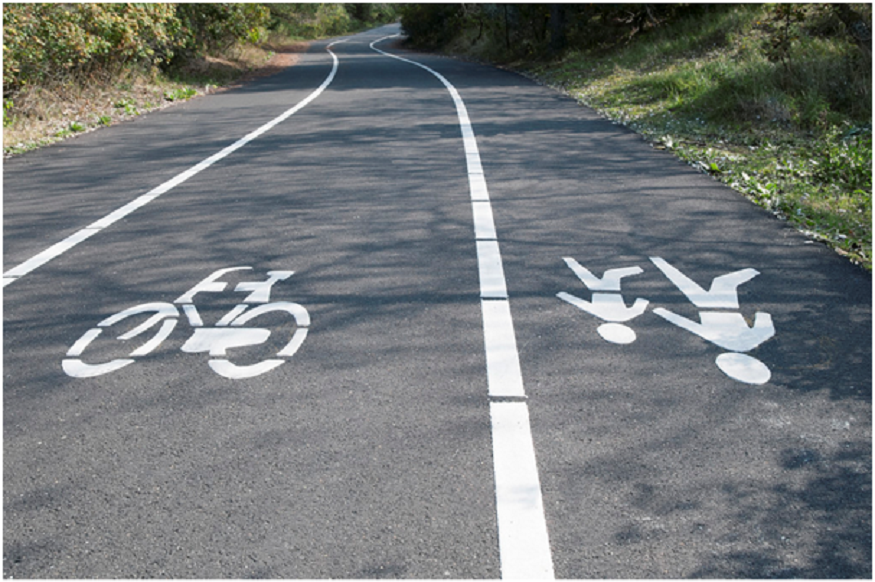
In a fast-growing and traffic-dense city like Anaheim, California, road safety and organization are top priorities. With its vibrant neighborhoods, high foot traffic, and iconic attractions such as Disneyland, Angel Stadium, and the Anaheim Convention Center, the city faces constant challenges in managing traffic flow. One of the most vital yet often overlooked components of roadway infrastructure is pavement markings.
These lines, symbols, and patterns painted on the road surface serve as silent traffic controllers. They guide vehicles, protect pedestrians, regulate flow, and enhance safety for everyone who uses the streets. Whether it’s a painted crosswalk or a centerline on a busy road, pavement markings in Anaheim play an important role in keeping transportation systems functional and secure.
What Are Pavement Markings?
Pavement markings refer to colored letters, symbols, and arrows and lines that are directed on the parking lots and roads. They act as eye pleasing signals as far as motorists, cyclists, and pedestrians are concerned. The usual kinds are:
- Lane lines (solid or dashed white/yellow lines separating traffic)
- Centerlines (usually yellow, dividing opposing traffic)
- Crosswalks
- Arrows indicating direction or turning lanes
- Stop lines
- Bike lanes
- Parking space lines
The marks used depict a specific meaning and role and constitute a type of a system that informs users in the road network of vital information.Visit this site to learn more.
Enhancing Traffic Flow
Among the most short-term roles of pavement markings, there is arranging traffic and minimizing confusion. The markings can help by having a smooth and predictable pattern of traffic by specifying lanes, directions and turn options.
This is especially significant in busy places in Anaheim with tourist attraction points and locations with high traffic intersections. Tourists who do not know the local roads will use the marks on pavements to show them their way. In the absence of these signals, traffic on the roads would be hectic and erratic leading to development of more possibilities of accidents and congestion.
As an example, well-marked turn arrows will discourage last-minute switch of lanes and well-marked lanes to merge will minimize bottleneck in major road and therefore in Katella Avenue or Harbor Boulevard.
Improving Pedestrian Safety
With numerous schools, parks, shopping centres and entertainment centres in Anaheim, pedestrians safety takes priority in Anaheim. Foot traffic is kept safe with the use of crosswalks, stop bars and school zone markings.
There are marked crosswalks to remind a driver who should give way, and there are visual warnings to help drivers see such objects like zebra stripes or the so-called ladder-style crosswalk. Wide-visibility signs especially come in handy at junctions close to school clubs, as in residential places like West Anaheim or even Anaheim Hills where many children walk or ride bicycles.
Pavement markings that help guide both the drivers and pedestrians greatly limit collision and near misses.
Supporting Bicyclists and Alternative Transit
Anaheim has progressively been adding bicycle facilities in its plans to achieve sustainability in transportation. Cycling lanes provide a resource that makes more people commute using bikes since they are separated from other cars, which are usually fast, and they have their own specific area they are supposed to use.
Pavement marking Anaheim like green paint, bike lane arrows, and bike symbols on roadways are easy to spot and signal both to cyclists and motorists how space should be shared. This contributes to a more organized and inclusive transportation system.
Nighttime and Adverse Weather Visibility
Most modern pavement markings use reflective products or contain glass beads to improve visibility in low-light conditions, which is necessary during nighttime drives in Anaheim or foggy or rainy adverse weather. Reflecting lane lines lessen the likelihood of drifting from a lane and support safe driving when street lighting is minimal. This is particularly the case when driving on highways, with little lighting around suburban roads or construction zones
Road Maintenance and Public Confidence
Newly-marked and well-maintained lines not only direct traffic but signify the community that its roads are being controlled well. Dirty, faded, and absent lines on roads are often difficult for drivers to assess, especially at intersections, roundabouts, and with multi-lane traffic. Re-painting worn lines effective keeps traffic organized and shows the Anaheim’s community that someone’s concern for its safety exists.
In Anaheim, the public works department maintains pavement markings through public works crews that regularly inspect its lines and the crews re-paint when required to remain on track. The on-going maintenance is an effective way to deter an accident, keep traffic flowing in a new clear directed way and show it is how to management well as a municipality.

Parking Lot Efficiency and Order
Aside from public roads pavement markings are important to enable organization and safety of vehicles in parking lots. From designated parking stalls, clear defined ADA compliant parking spaces, directional arrows, and fire lanes to cables and barriers to outline properties helping to get safe, well-placed public parking in shopping centers and apartment complexes and offices throughout Anaheim.
Good layout of parking reduces the number of parking frustrations and increases the parking capacity and supports preventing minor accidents happening in crowded and congested parking lots. Read this for reference.
Conclusion
Pavement markings might seem simple, but they are fundamental to a safe and efficient transportation system, especially in a bustling city like Anaheim. From guiding drivers through complex intersections to ensuring children cross the street safely near schools, these markings play a vital role in everyday urban life.
As modernize of infrastructure in Anaheim continues to grow, pavement markings remain one of the most cost-effective and impactful tools for improving road safety, traffic flow, and community satisfaction. Whether you’re walking, biking, or driving, those painted lines beneath your wheels are there to help keep you safe and moving in the right direction.

